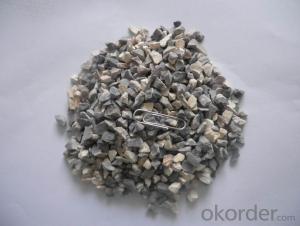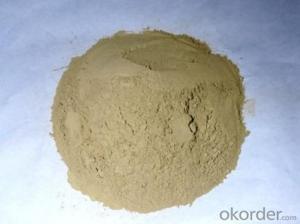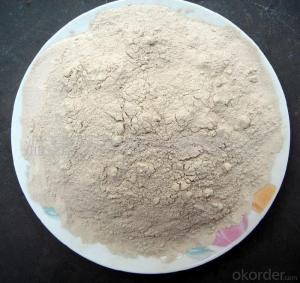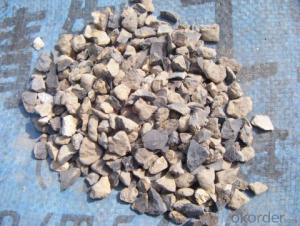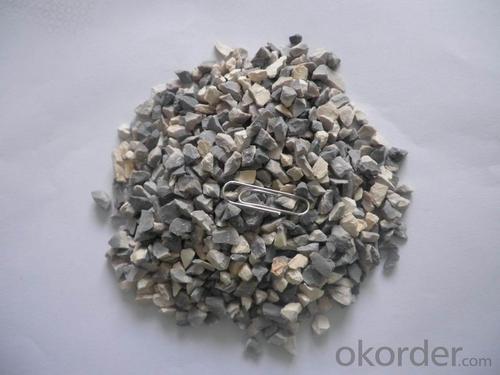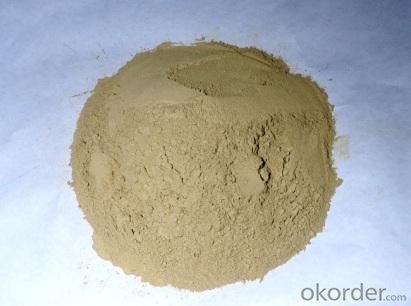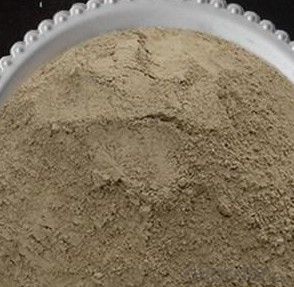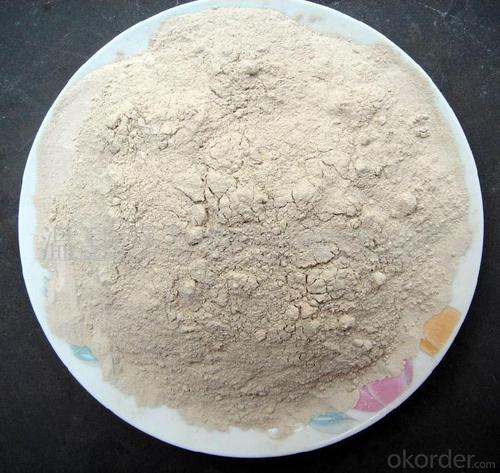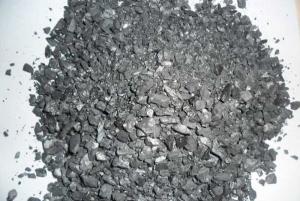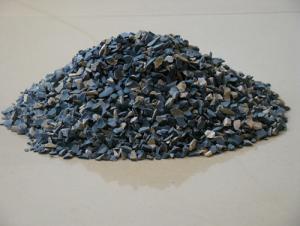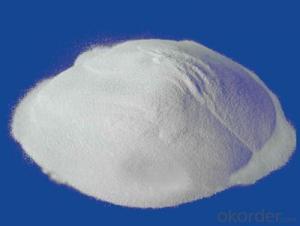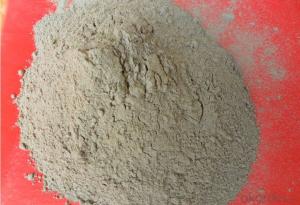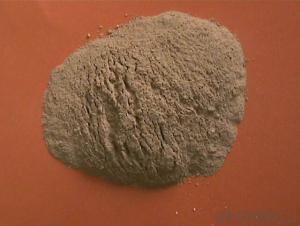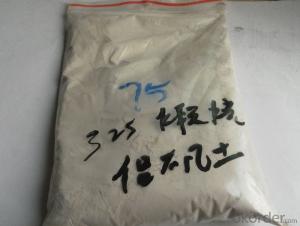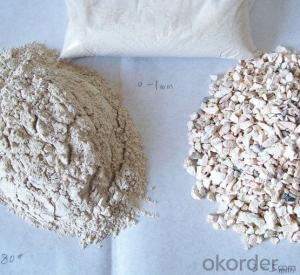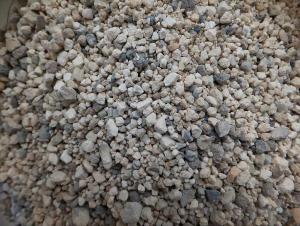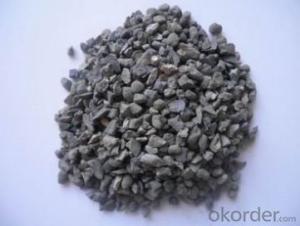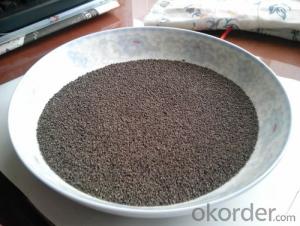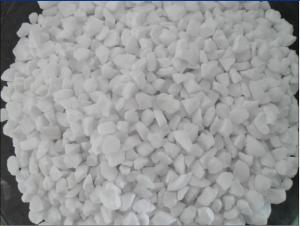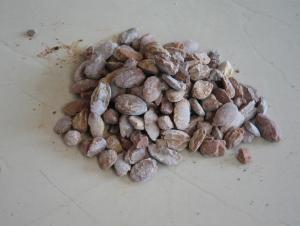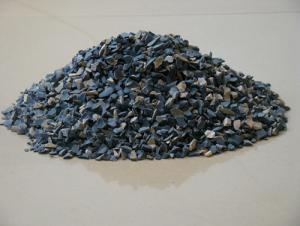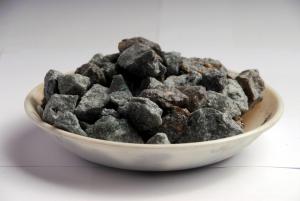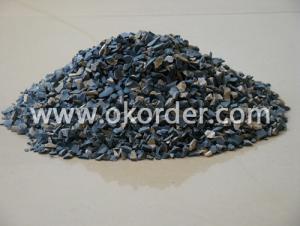Raw Materials for Refractory:Refractory Grade Calcined Bauxite 85% Grains
- Loading Port:
- Tianjin
- Payment Terms:
- TT OR LC
- Min Order Qty:
- 25 m.t.
- Supply Capability:
- 12000 m.t./month
OKorder Service Pledge
OKorder Financial Service
You Might Also Like
Refractory Grade Calcined Bauxite 85PCT Grains
Calcined Bauxite Introduction
Property | Specifications |
Name | aluminous soil ; bauxite |
Color | White, offwhite, auburnish yellow or light red (with Fe) |
Bulk Density | 2.55~3.6 g/cm3 |
Hardness | 1~3 |
Main usages | 1. Aluminium metallurgy 2.Refractory |
Calcined Bauxite Specifications

Calcined Bauxite Applications
1. Aluminium metallurgy
2. Precision casting / Investment casting:
bauxite grog fines can be made into mold for precision casting.
3. Refractory: high alumina bauxite’s refractoriness can reach 1780°C.
It is charactered by good chemical stability and mechanical performance. (Al2O3 ≥48% with low Fe2O3)
4. Aluminium silicate refractory fiber: The high alumina bauxite grog can melt under 2000°C-2200°C in the electric arc furnace.After a series of processing, it can become aluminium silicate refractory fiber,
which can be made into fiber blanket, plate,cloth.
5. Mixing magnesia and bauxite grog with binders to pour the molten steel ladle for better overall lining
performance.
Usage
(1) aluminium industry. Used in national defense, aerospace, automotive, electronics, chemical industry,
daily necessities, etc.
(2) precision casting. Alumina clinker made after the mould precision casting processed into fine powder.
Used in military industry, aerospace, communications, instrumentation, machinery and medical equipment department.
Pictures:

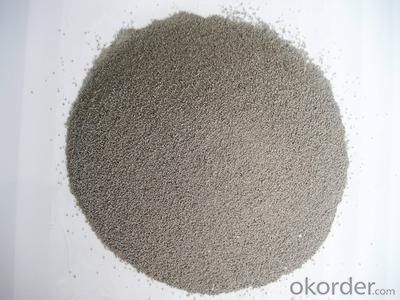
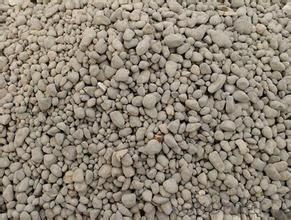
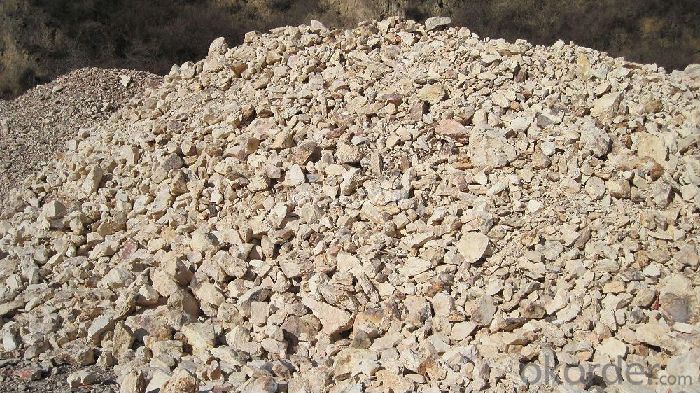
- Q: Do you know what the main indicators are for the inspection of refractory materials? Thank you very much for your requests and reports
- The main indicators of refractory material inspection must be fire resistance materials, flame retardant, a subdivision of lecture, ignite the smoke toxicity, smoke density, heat release and flue gas;
- Q: What type of firebrick does TZ-3 represent?
- It is the standard brick.
- Q: What are the characteristics of thealuminium oxide refractory?
- Physical properties of refractories include structural properties, thermal properties, mechanical properties, performance and job performance. The structural properties of refractories include porosity, bulk density, water absorption, air permeability and pore size distribution. The thermal properties of refractories include thermal conductivity, thermal expansion coefficient, specific heat, heat capacity, thermal diffusivity and thermal emission rate, ect. Mechanical properties of refractories include compressive strength, tensile strength, flexural strength, torsional strength, shear strength, impact strength, abrasion resistance, creep resistance, adhesive strength and modulus of elasticity, ect.
- Q: What's the maximum temperature that the refractory ceramic fiber cloth can endure?
- It depends on the composition of the ceramic material. If its composition is alumina and it is used by civilians, its normal use temperature is 1200℃; if its composition is alumina but it is for millitary use, it can endure the highest temperature of 2200℃.
- Q: What a blast furnace refractories generally?
- Usually metal anchorage plus wear-resistant refractory spray paint. at the middle part we use high alumina bricks, corundum bricks. high duty refractory is important in improving bosh furnace lining.
- Q: The classification of fire-resistant material
- Refractory material cna be divided into common and special fire proofing material. Common fire proofing material can be sub-divided in to acid fire proofing material, neutral fire proofing material. and alkaline fire proofing material according to chemical properties. Special fire proofing material can be divided into high temperature oxide refractory, refractory compounds and high temperature composite materials according to the composition. In addition, it also can be divided into common refractory products (1580 ~ 1770 ℃), high-grade refractory products (1770 ~ 1770 ℃) and super refractory products (above 2000 ℃) according to the strength . According to the shape, it can be divided into block (standard brick, special-shaped brick, etc.), special shape (crucible, sagger, pipe, etc.), fibrous (aluminum silicate, zirconia and boron carbide, etc.) and irregular shape (refractory clay, refractory castable, ramming material and so on). According to sintering process, it can be divided into sintered product, fused cast product and melting jetting product.
- Q: What material is refractory material?
- Basic refractory materials, basic refractory, CaO, basic, MgO style alkaline earth oxide. The refractory materials mainly refers to magnesia refractories, dolomitic and lime refractory refractory. Main categories: (1) strongly basic magnesite brick, magnesia carbon brick, limestone and dolomite brick refractory materials;(2) alkalescent magnesia chrome refractories, forsterite refractory, magnalium and magnesia-chrome spinel refractory, basic refractory materials, high-temperature caustic slag, alkaline solvent resistance, strongly acidic slag flux or acidic refractory. The reaction is mainly used in steel furnace such as colour metal smelting furnace and cement kiln.
- Q: What kind of refractory bricks material is best?
- Domestic experimental electric furnace body is made up of hearth, insulating layer and shell. Sic and high-alumina material are often used in traditional electric furnace under 1300℃ traditional furnace, while corundum material is used in 1600℃. Laboratory furnace of Occident usually uses ceramic fiber tank which is characterized by rapid temperature raising, good accuracy, light weight and small volume. In recent years, domestic Hangzhou blue sky Instrument and Shanghai laboratory equipment all have been produced by experimental furnace with ceramic fiber tank.
- Q: Who knows the roofing fireproofing and waterproof material?
- If you should do home water proofing, I recommend the acrylate waterproof coating with high elasticity of Qinglong waterproof, because it has good aging resistance, extensibility, elasticity, binding property and film-forming property; waterproof layer is a closed system, the overall waterproof effects are very good, especially for the construction of heterotypic structure base and roofing, walls, toilet and bathroom, basement and other buildings waterproof and anti-seepage engineering in the conditions of non-permanent immersion;
- Q: Can polystyrene foam color steel plate be used as decorative fireproofing material ?
- As far as I am concerned, polystyrene foam color steel plate cannot be used as decorative fireproofing material. Because polystyrene flame retardant and non-flame retardant of the points, from the fire retardant is generally self-extinguishing. Polystyrene is the polymer synthesized by styrene?monomer through free radicals polycondensation reaction. It is a transparent thermoplastic?plastic. With above 100 ℃ glass transfering temperature,it is often used to make a variety of disposable container and disposable foam lunch box which have to withstand the boiling water temperature.
Send your message to us
Raw Materials for Refractory:Refractory Grade Calcined Bauxite 85% Grains
- Loading Port:
- Tianjin
- Payment Terms:
- TT OR LC
- Min Order Qty:
- 25 m.t.
- Supply Capability:
- 12000 m.t./month
OKorder Service Pledge
OKorder Financial Service
Similar products
Hot products
Hot Searches
Related keywords
